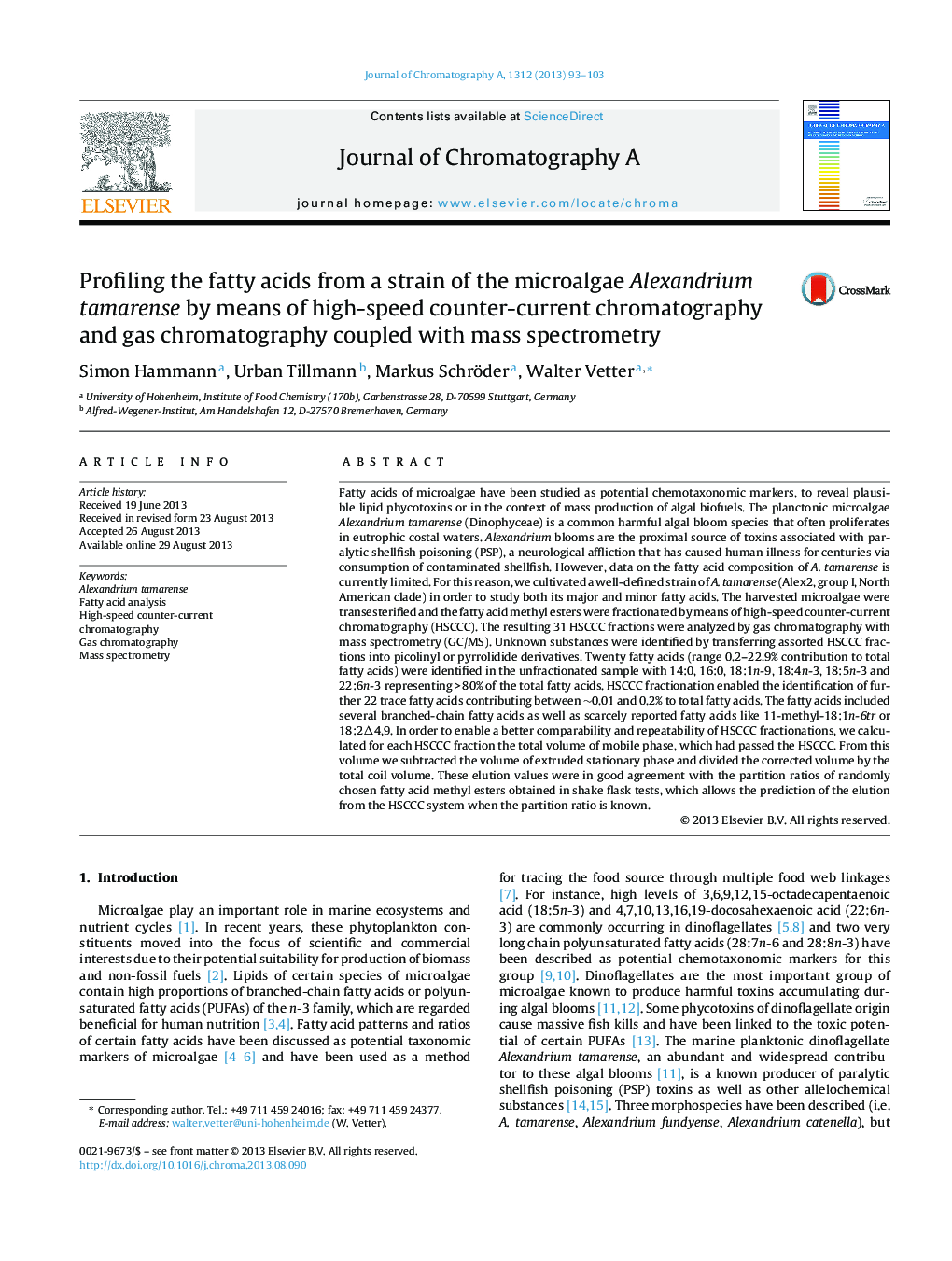| کد مقاله | کد نشریه | سال انتشار | مقاله انگلیسی | نسخه تمام متن |
|---|---|---|---|---|
| 1203587 | 1493614 | 2013 | 11 صفحه PDF | دانلود رایگان |

• A well defined strain of the microalgae Alexandrium tamarense (Alex2) was cultured.
• The fatty acids of Alex2 were analyzed by means of HSCCC and GC/MS.
• HSCCC enabled the detection of 22 trace fatty acids in the transesterified sample.
• Several unusual fatty acids such as 11-Me-18:1n-6tr and 18:2Δ4,9 were identified.
• The fatty acids 18:4n-3 and 18:5n-3 could be isolated in pure form.
Fatty acids of microalgae have been studied as potential chemotaxonomic markers, to reveal plausible lipid phycotoxins or in the context of mass production of algal biofuels. The planctonic microalgae Alexandrium tamarense (Dinophyceae) is a common harmful algal bloom species that often proliferates in eutrophic costal waters. Alexandrium blooms are the proximal source of toxins associated with paralytic shellfish poisoning (PSP), a neurological affliction that has caused human illness for centuries via consumption of contaminated shellfish. However, data on the fatty acid composition of A. tamarense is currently limited. For this reason, we cultivated a well-defined strain of A. tamarense (Alex2, group I, North American clade) in order to study both its major and minor fatty acids. The harvested microalgae were transesterified and the fatty acid methyl esters were fractionated by means of high-speed counter-current chromatography (HSCCC). The resulting 31 HSCCC fractions were analyzed by gas chromatography with mass spectrometry (GC/MS). Unknown substances were identified by transferring assorted HSCCC fractions into picolinyl or pyrrolidide derivatives. Twenty fatty acids (range 0.2–22.9% contribution to total fatty acids) were identified in the unfractionated sample with 14:0, 16:0, 18:1n-9, 18:4n-3, 18:5n-3 and 22:6n-3 representing > 80% of the total fatty acids. HSCCC fractionation enabled the identification of further 22 trace fatty acids contributing between ∼0.01 and 0.2% to total fatty acids. The fatty acids included several branched-chain fatty acids as well as scarcely reported fatty acids like 11-methyl-18:1n-6tr or 18:2Δ4,9. In order to enable a better comparability and repeatability of HSCCC fractionations, we calculated for each HSCCC fraction the total volume of mobile phase, which had passed the HSCCC. From this volume we subtracted the volume of extruded stationary phase and divided the corrected volume by the total coil volume. These elution values were in good agreement with the partition ratios of randomly chosen fatty acid methyl esters obtained in shake flask tests, which allows the prediction of the elution from the HSCCC system when the partition ratio is known.
Journal: Journal of Chromatography A - Volume 1312, 18 October 2013, Pages 93–103